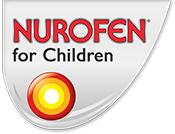The Art of Falling out of Trees

However hard we try to prevent them, our children still have many little accidents. As they grow, their lives As a result, the types of accidents they can have change too, from little tumblings to actually falling out of trees! With increasing age and independence, injuries outside the home may also increase. However, children under five are at some of the greatest risk from injuries both outside the home, and in boys even more so than girls.
Here are five common childhood injuries faced by children under five, and how they might be avoided:
1. Breaks, fractures and sprains
Whilst playing, it’s likely that a child will take a tumble or two, but these falls can result in injuries, especially when a child breaks his fall with a leg or an arm. This injury is more commonly seen in older children, and particularly when trees are involved! The fall can result in a sprain (a painful twisting of the ligaments in a joint), a fracture, or even the full breaking of a bone. Obviously, parents warn their children to ‘be careful’, but instead, they can try to minimise the risk of serious injuries by taking them to grassy or padded play areas.
2. Burns
Matches and lighters can be fascinating to children and should be stored out of their reach. If you must have an open fire, first make sure the fire guard is securely in place - do not get distracted before this has been done. Cooker rings can easily cause a burn injury when little fingers reach up to the cooker hob. So turn off a gas ring or electric hob as soon as you have finished cooking. As an added measure, tell your child that he is not to approach the cooking area till you give permission to do so, and only in your presence.
3. Scalds
Scalds and burns are often grouped together, but they are caused by different things and have different effects as well. Unlike a burn, which is caused by dry heat, a scald is caused by something wet, such as steam, hot oil, or boiling water. This will rarely destroy the outer layers of skin, but can damage the tissue underneath. The kitchen is the most common place for scalds to occur, and can be a dangerous place for your children - so keep them out of the room when possible. Here are some of the tips to avoid these hazards:
- Boiling saucepans should be well out of reach - handles must point away from you
- Boil or fry food on the rear cooker rings if possible
- Don't let kettle leads dangle over the work surface, or consider buying a cordless kettle
- Don't let children play on the kitchen floor while you are cooking. This way, you will not trip over them and injure them.
4. Cuts and grazes
Scrapes and grazes are often caused by a fall onto hard, rough surfaces such as concrete, particularly when children are running or chasing each other. Broken glass can be a nasty culprit whilst playing outside, and knives are an obvious danger in the home, although any sharp object, such as a broken toy, can also result in cut hands and fingers. Whilst it’s important to let children have their freedom, we can help improve the safety of the home by:
- Keeping knives out of reach and not leaving them around after use
- Keeping the kitchen tidy to help prevent breakages and spillages
- Clearing up broken glass or china as quickly as possible
- Folding down the lids of opened, emptied tin cans (mind your own fingers) and throwing them straight into the bin.
5. Bumps and bruises
A lot of minor injuries in children, such as bumps and bruises, can be caused by falls. Of course, the odd knock or bump is a part of growing up, and that’s okay. A bruise can be distressing and hurt when the area is pressed, but they heal quickly. Typically, children can fall from furniture, stairs and steps, as well as from windows and of course, trees. So to limit the frequency of bruises, check that you have:
- Stair gates in working order
- Window locks
- Tidy play areas to help prevent your children tripping and falling onto the floor, toys or furniture
Most minor bumps and bruises can be treated by applying an ice pack (but don't apply ice directly on the skin). They can also lead to aches and pains, so you may want to consider giving your child a painkiller first. You'll find that the Nurofen for Children range of over-the-counter medication has a choice of treatments designed especially for the needs of children. Nurofen contains ibuprofen as its main active ingredient and can be given to children as young as three months.*
In some cases however, a bump on the head could be dangerous, and one should consider seeking medical help if there is any doubt about a child's wellbeing following this type of injury.
Safety first
So, check the safety measures in your home to safeguard both the little and not so little ones. If you think your child may need more than just a plaster or a little TLC, remember that pain relievers containing ibuprofen, the active ingredient in the Nurofen for Children range*, can to help ease pain and inflammation.
* For babies and children from 3 months (weighing over 5kg).
Nurofen for Children Orange/Strawberry Baby 100ml.Nurofen for Children Orange/Strawberry 3 months to 9 years 100ml.
Nurofen for Children Orange/Strawberry 3 months to 12 years 200ml. Nurofen for Children Orange/Strawberry Singles 8’s/16’s.
For the relief of pain and fever. Contains ibuprofen. Always read the label.
All information presented is not meant to diagnose or prescribe. In all health matters please contact your doctor.
